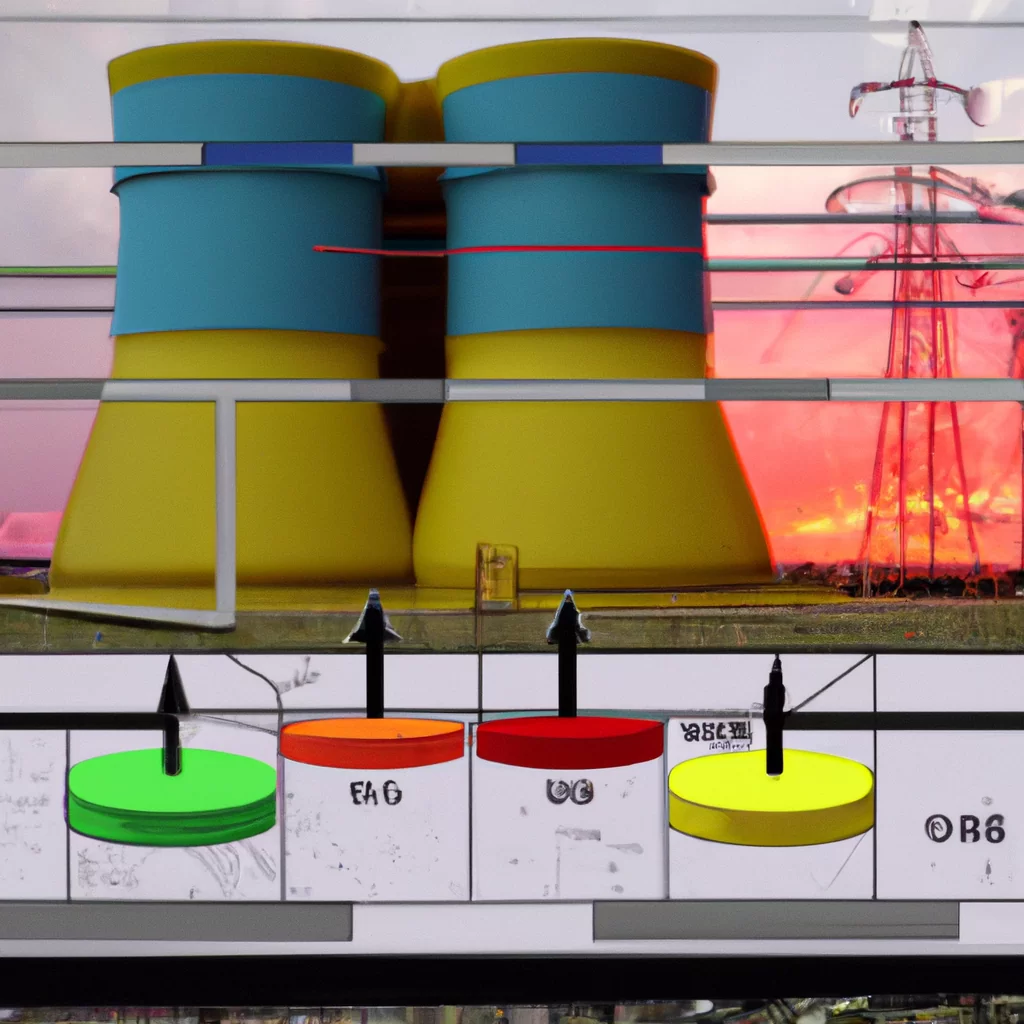How does nuclear fission work in power plants?


How does nuclear fission work in power plants?
Nuclear fission is a process that occurs when an atomic nucleus is split into two smaller nuclei, releasing a large amount of energy in the process. This process is used in nuclear power plants to generate electricity, which has become an essential source of energy in many countries around the world. In this article, we will explore how nuclear fission works in power plants, the structure of nuclear reactors, and the benefits and drawbacks of nuclear power.
How Nuclear Fission Works in Power Plants
Nuclear power plants use nuclear fission to generate electricity. This process involves splitting the nucleus of an atom, which releases a large amount of energy in the form of heat. The heat produced by nuclear fission is used to generate steam, which drives a turbine, producing electricity.
The fuel used in nuclear power plants is usually enriched uranium, which is a radioactive element. When the uranium atoms are hit by neutrons, they split, releasing energy in the form of heat and additional neutrons. These neutrons can then collide with other uranium atoms, causing them to split and release more energy and neutrons. This process creates a chain reaction, which produces a large amount of energy.
Structure of Nuclear Reactors
Nuclear reactors are the heart of nuclear power plants, where nuclear fission occurs. The reactor core contains the fuel, which is usually uranium pellets encased in metal rods. The rods are arranged in a grid pattern and submerged in a coolant, usually water, which helps to regulate the temperature of the reactor.
The reactor also has control rods, which are made of materials such as boron or cadmium that absorb neutrons. These control rods can be inserted or removed from the reactor to control the rate of the chain reaction and prevent it from getting out of control.
The heat produced by nuclear fission is used to heat water, which is then turned into steam. The steam drives a turbine, which produces electricity. The steam is then cooled and condensed back into water, which is returned to the reactor core to repeat the cycle.
Benefits and Drawbacks of Nuclear Power
Nuclear power has many benefits, including its low carbon emissions, which makes it an attractive option for countries looking to reduce their greenhouse gas emissions. Nuclear power plants can also produce a large amount of energy, which makes them an important source of baseload power.
However, nuclear power also has some drawbacks. One of the main concerns is the potential for accidents, which can result in the release of radioactive materials. This can have serious health and environmental consequences and can also lead to the displacement of people living near the affected area.
Another concern is the issue of nuclear waste, which is highly radioactive and can remain dangerous for thousands of years. The safe disposal of nuclear waste is an ongoing challenge, and there is currently no long-term solution in place.
Conclusion
In conclusion, nuclear fission is a process used in nuclear power plants to generate electricity. The process involves splitting the nucleus of an atom, which releases a large amount of energy in the form of heat. The heat is used to generate steam, which drives a turbine, producing electricity. While nuclear power has many benefits, including its low carbon emissions and ability to produce a large amount of energy, it also has some drawbacks, including the potential for accidents and the issue of nuclear waste. It is important to carefully consider these factors when evaluating the role of nuclear power in our energy mix.
Recent Posts
How do I create an engaging and informative online quiz or assessment?
Creating an engaging and informative online quiz or assessment can be a powerful tool for… Read More
What are the most effective methods for managing and reducing work-related stress in the hospitality industry?
Work-related stress is a common issue in the hospitality industry, where employees often face long… Read More
How can I improve my assertiveness and communication skills in a leadership position?
In a leadership position, assertiveness and effective communication skills are crucial for success. Being able… Read More
What are the key elements of a successful employee recognition and rewards program?
Employee recognition and rewards programs play a crucial role in motivating and engaging employees, as… Read More
How do I effectively manage and respond to customer feedback and reviews?
Customer feedback and online reviews play a crucial role in shaping a company's reputation and… Read More
What are the best strategies for effective time management as a stay-at-home parent?
Effective time management is crucial for stay-at-home parents who juggle multiple responsibilities on a daily… Read More